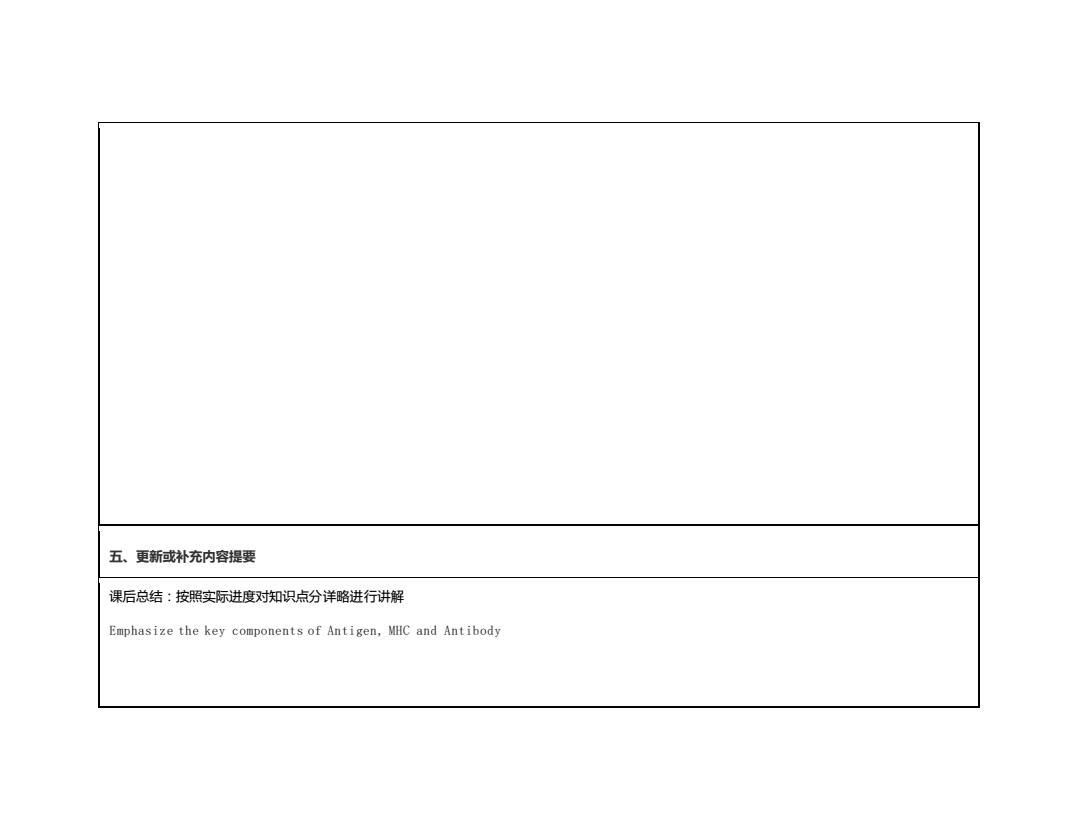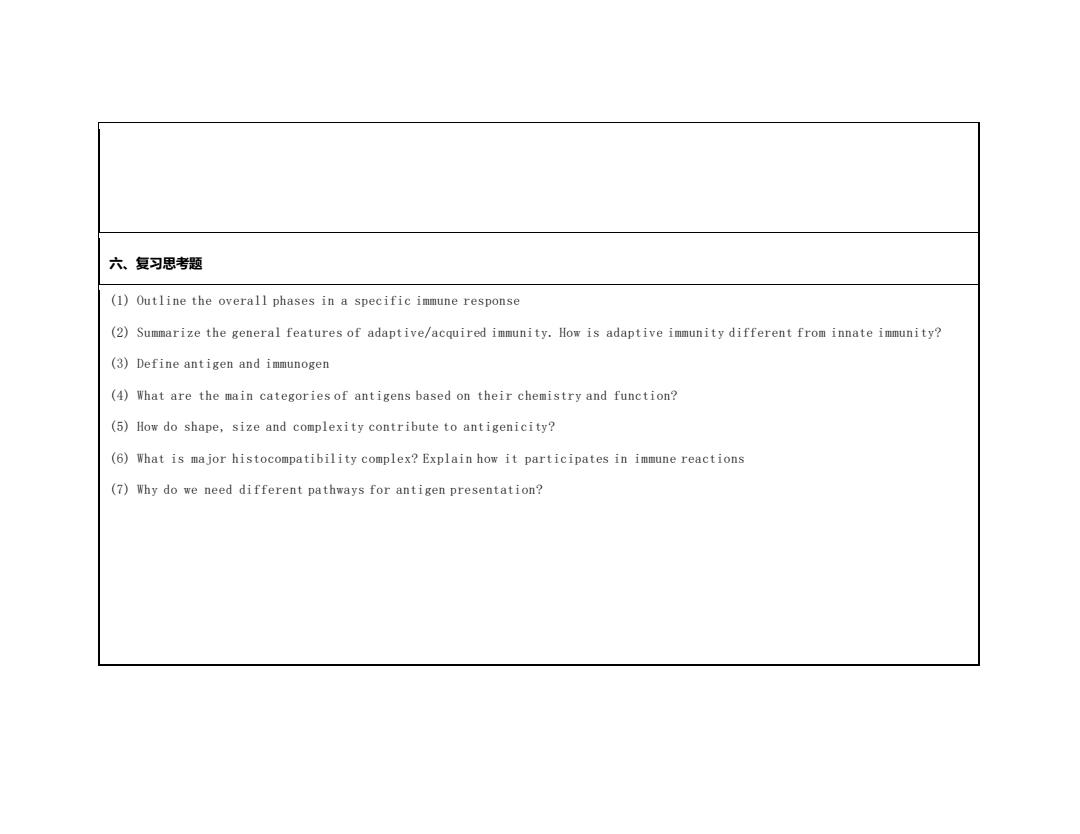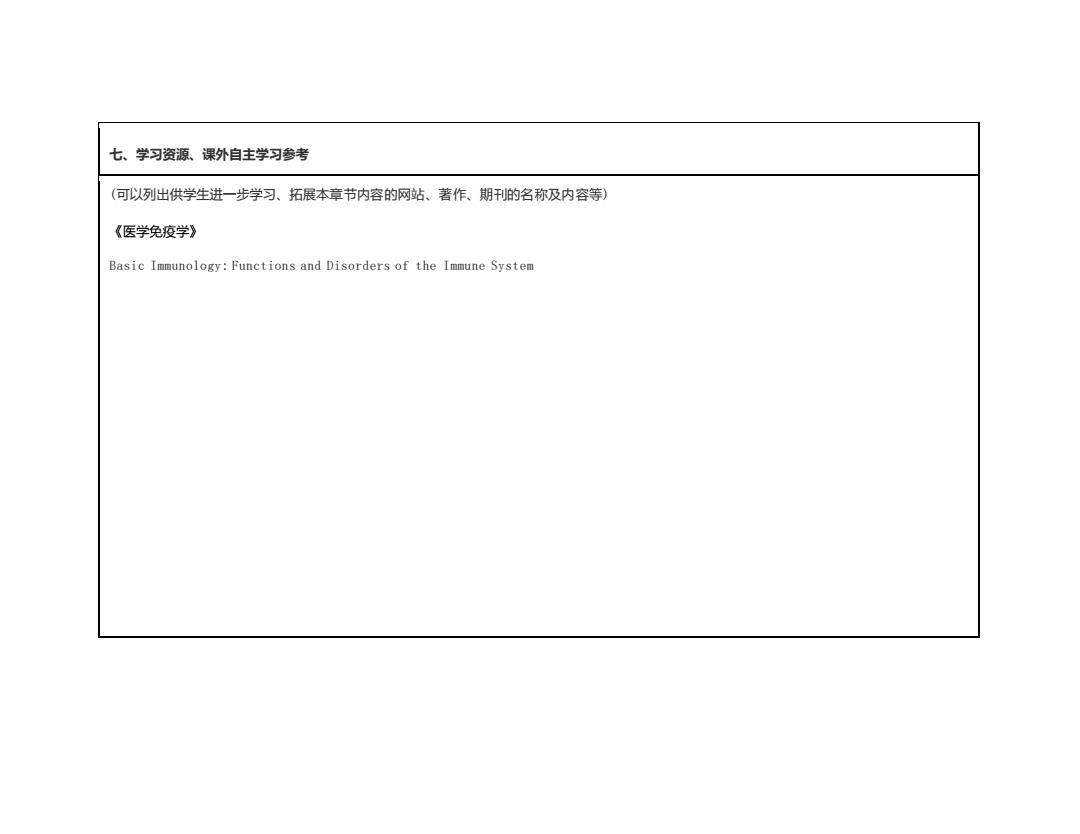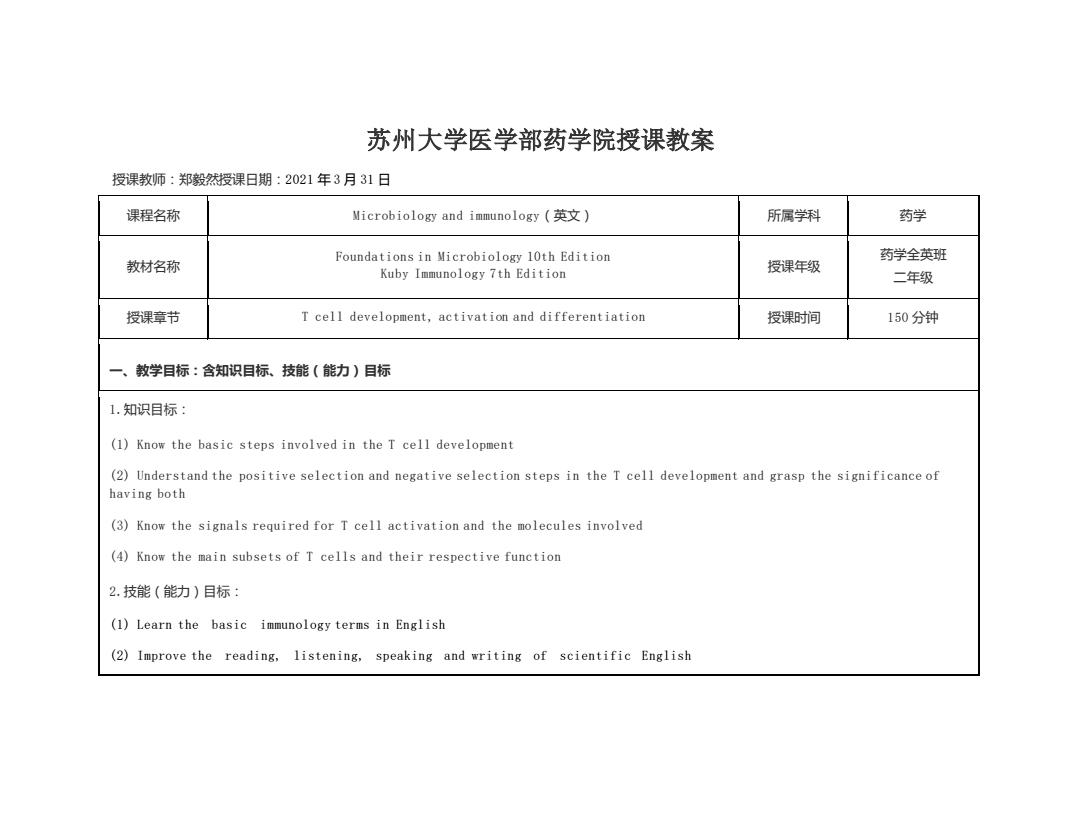
五、更新或补充内容提要 课后总结:按照实际进度对知识点分详略进行讲解 Emphasize the key components of Antigen,MHC and Antibody
五、更新或补充内容提要 课后总结:按照实际进度对知识点分详略进行讲解 Emphasize the key components of Antigen, MHC and Antibody

六、复习思考题 (1)Outline the overall phases in a specific immune response (2)Summarize the general features of adaptive/acquired immunity.How is adaptive immunity different from innate immunity? (3)Define antigen and immunogen (4)What are the main categories of antigens based on their chemistry and function? (5)How do shape,size and complexity contribute to antigenicity? (6)What is major histocompatibility complex?Explain how it participates in immune reactions (7)Why do we need different pathways for antigen presentation?
六、复习思考题 (1) Outline the overall phases in a specific immune response (2) Summarize the general features of adaptive/acquired immunity. How is adaptive immunity different from innate immunity? (3) Define antigen and immunogen (4) What are the main categories of antigens based on their chemistry and function? (5) How do shape, size and complexity contribute to antigenicity? (6) What is major histocompatibility complex? Explain how it participates in immune reactions (7) Why do we need different pathways for antigen presentation?

七、学习资源、课外自主学习参考 (可以列出供学生进一步学习、拓展本章节内容的网站、著作、期刊的名称及内容等) 《医学免疫学》 Basic Immunology:Functions and Disorders of the Immune System
七、学习资源、课外自主学习参考 (可以列出供学生进一步学习、拓展本章节内容的网站、著作、期刊的名称及内容等) 《医学免疫学》 Basic Immunology: Functions and Disorders of the Immune System

苏州大学医学部药学院授课教案 授课教师:郑毅然授课日期:2021年3月31日 课程名称 Microbiology and immunology(英文) 所属学科 药学 Foundations in Microbiology 10th Edition 药学全英班 教材名称 Kuby Immunology 7th Edition 授课年级 二年级 授课章节 T cell development,activation and differentiation 授课时间 150分钟 一、教学目标:含知识目标、技能(能力)目标 1.知识目标: (1)Know the basic steps involved in the T cell development (2)Understand the positive selection and negative selection steps in the T cell development and grasp the significance of having both (3)Know the signals required for T cell activation and the molecules involved (4)Know the main subsets of T cells and their respective function 2.技能(能力)目标: (1)Learn the basic immunology terms in English (2)Improve the reading,listening,speaking and writing of scientific English
苏州大学医学部药学院授课教案 授课教师:郑毅然授课日期:2021 年 3 月 31 日 课程名称 Microbiology and immunology(英文) 所属学科 药学 教材名称 Foundations in Microbiology 10th Edition Kuby Immunology 7th Edition 授课年级 药学全英班 二年级 授课章节 T cell development, activation and differentiation 授课时间 150 分钟 一、教学目标:含知识目标、技能(能力)目标 1.知识目标: (1) Know the basic steps involved in the T cell development (2) Understand the positive selection and negative selection steps in the T cell development and grasp the significance of having both (3) Know the signals required for T cell activation and the molecules involved (4) Know the main subsets of T cells and their respective function 2.技能(能力)目标: (1) Learn the basic immunology terms in English (2) Improve the reading, listening, speaking and writing of scientific English

二、授课内容(依据教学大纲)及时间分配 Lecture 1: (1)Overview of tissues and organs required for T cell development(10 min) (2)Early thymocyte development (10 min) (3)The origin of T cell receptor diversity (30 min) Lecture 2: (4)Overview of T cell development (double negative stages,double positive stage,single positive stage)(12min) (5)Positive selection and its significance (12min) (6)Negative selection and its significance (12min) (7)The structure of T cell receptor (TCR)(10min) (8)Lineage commitment:a BT cells and y 5T cells (4min) Lecture 3 (9)T cell activation signal 1:TCR-MHC-peptide signaling (20min) (10)T cell activation signal 2:Co-stimulatory signal (20min)
二、授课内容(依据教学大纲)及时间分配 Lecture 1: (1) Overview of tissues and organs required for T cell development (10 min) (2) Early thymocyte development (10 min) (3) The origin of T cell receptor diversity (30 min) Lecture 2: (4) Overview of T cell development (double negative stages, double positive stage, single positive stage) (12min) (5) Positive selection and its significance (12min) (6) Negative selection and its significance (12min) (7) The structure of T cell receptor (TCR) (10min) (8) Lineage commitment: αβT cells and γδT cells (4min) Lecture 3 (9) T cell activation signal 1: TCR-MHC-peptide signaling (20min) (10) T cell activation signal 2: Co-stimulatory signal (20min)